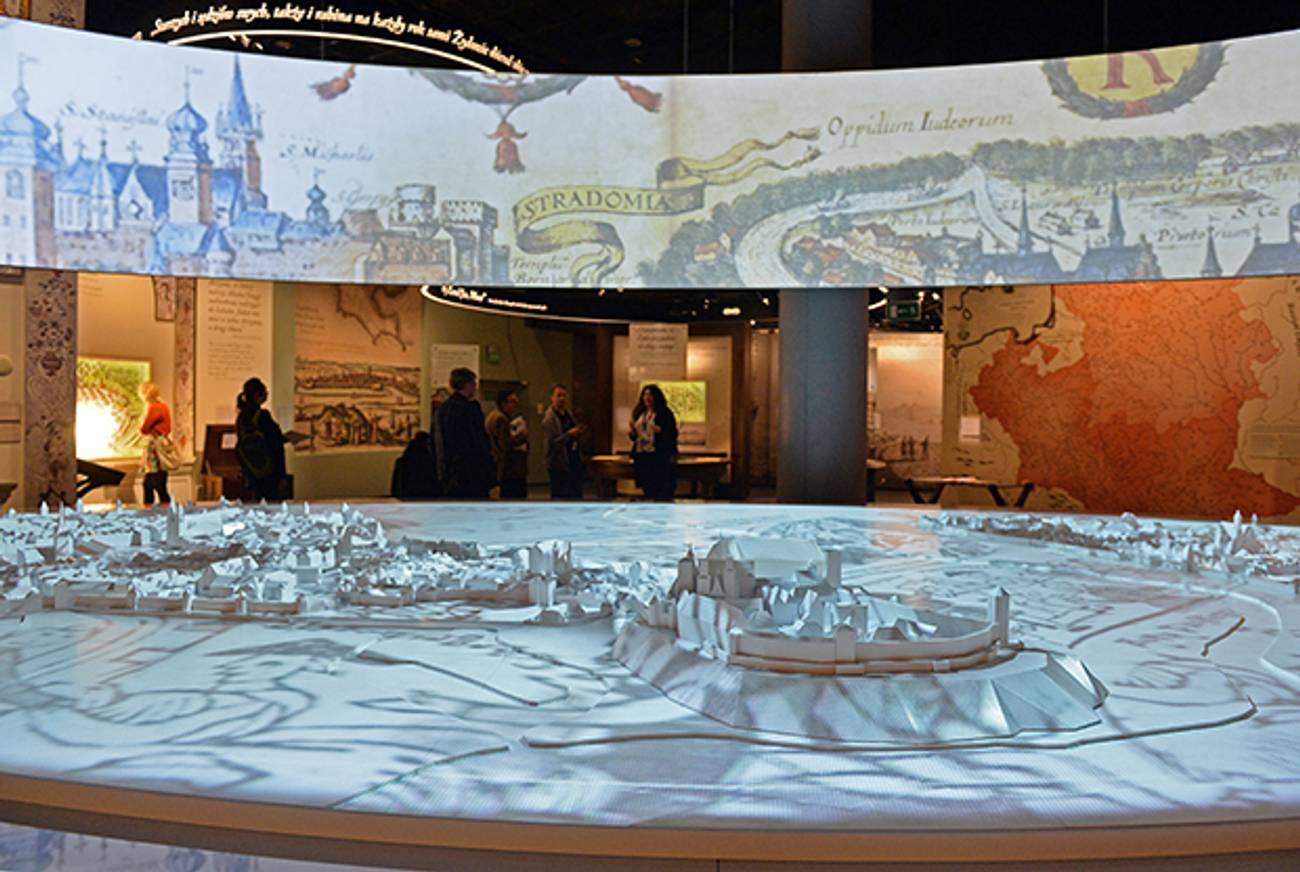Jewish Life in Poland on Display in Warsaw
Museum of the History of Polish Jews unveils sprawling core exhibit




When the Museum of the History of Polish Jews opened its doors in Warsaw last spring, it marked a momentous occasion. The event spoke not only to how far Poland had come since the fall of Communism in 1989, but also to the ways in which the country has, despite skepticism, come to terms with its dark, anti-Semitic past, and how it is embracing its complex legacy as the former home to one of the world’s largest Jewish communities.
Still, while last year’s soft opening was a watershed moment, it was largely a celebration of the impressive vessel meant to hold the institution’s most ambitious component—a vast core exhibit that would tell the continuous thousand-year story of Polish Jewry for the first time. After $55 million in donations and two decades of work, that colossal promise will be delivered tomorrow when the Museum officially opens the core exhibit’s eight sprawling galleries.
While many museums, from Yad Vashem to the United States Holocaust Memorial Museum, tell the story of how the Polish Jews died, this museum tells the story of how they actually lived. It was a story largely lost during the devastation of the Holocaust, which claimed 90 percent of Polish Jewry, and then suppressed under Communism. But thanks to more than a decade of work by an army of historians, led by the exhibit’s director, Barbara Kirshenblatt-Gimblett, that story has now been recovered and is on display for the world to see.
Divided into eight galleries that represent eight distinct eras, the exhibit unfolds over 43,000 square feet and via high-tech interactive multimedia displays. While it begins with the myth of how Jews first settled in Poland in the 10th century, the following seven galleries carefully demystify the complex relationship between Jews and Poles up until the present day. Anecdotes of Polish anti-Semitism sit adjacent to stories of how the Polish nobility offered Jews a safe haven from persecution. For example, one room tells the story of Zamość, a town in southeastern Poland where its founder, Jan Zamoyski, invited Sephardic Jews from Lvov to settle after they’d been severely discriminated against by the Ashkenazi brethren. The city eventually became a center for Hasidic life and by 1939, its population was 43 percent Jewish.
Despite the fact that Poland is most often thought of by Jews as the site of the Holocaust, the story of the Shoah occupies only one-eighth of the entire exhibit. Yet despite its size, the Holocaust gallery is one of the most complex of its kind. Designed under the guidance of historians Barbara Engelking and Jacek Leociak, authors of the 2009 book, The Warsaw Ghetto: A Guide to the Perished City, the exhibit doesn’t regurgitate what people already know about the Nazi genocide. Instead, it examines the ways in which Jews “lived” during the reign of Nazi terror and how their Polish counterparts reacted—or didn’t react—to their Jewish neighbors’ suffering and ultimate annihilation.
Not only is the exhibit’s sheer historical breadth impressive, but so is the complexity with which it tells that history. From the “golden age” of Jewish life in Poland (1569-1648) to the post-war pogrom in Kielce and the 1968 purge of Jews under Communism, each story is told through multiple and sometimes competing perspectives, which remind visitors that no history is ever purely objective. Even photographs taken by Nazis in the death camps are framed not as objective, wholesale accounts of the Jewish experience during the Holocaust, but as representations purposefully crafted by the perpetrators.
After a lap through the entire core exhibit, it becomes clear that Poles and Jews have a lot more in common than one would think. While one of the museum’s missions is to help Poles understand that their history remains incomplete without the history of the country’s Jewry, it also reminds Jews—nearly 80 percent of whom can claim roots in Poland—that much of their own rich, vibrant history is inextricably tied to a country which many continue to think of as little more than a byword for anti-Semitism.
Thanks to a partnership with Google Cultural Institute, you don’t have to be the president of Poland or Israel (who will attend tomorrow’s ceremony) to see the exhibit when it first opens. The museum is offering a live stream of the grand opening, as well as a virtual interactive tour of the core exhibit, museum building and select components of its temporary exhibit on the history of how the museum came together.
Previous: Warsaw’s Museum of the History of Polish Jews Appoints Director
Related: The Curator of Joy and Ashes
Denise Grollmus is a writer and Fulbright scholar currently living in Warsaw.